火星 ALPO-Japan Latest

Mars Image 2016/06/10(UT)
遠藤宏次,三品利郎,米山誠一,石橋力,堀井恵策,熊森照明,安達 誠,柚木健吉,田中千尋,菅野清一,尾崎公一,薄出敏彦
Clyde Foster,Charles Galdies,Robert Schulz,Efrain Morales Rivera,Silvia Kowollik,Manos Kardasis,Kolovos Dimitrios,Paul Maxson,Damian Peach
K.Endo,T.Mishina,S.Yoneyama,T.Ishibashi,Clyde,K.Horii,T.Kumamori,C.Galdies,M.Adachi,K.Yunoki,C.Tanaka,R.Schulz,E.Morales,K.Silvia,S.Kanno,Kardasis,Kolovos,K.Ozaki,T.Usude,P.Maxson,D.Peach
解説(安達)
6月8日に著しく目立ったHellasからのdustの流れは低調になった。Clyde Foster氏の
画像によれば、Hellas盆地の西側の壁の手前でいったんさえぎられたような格好だ。
Efrain Morales Rivera氏の画像では、Mare Erythraeum付近の晴れ渡った部分の
影響でSP hoodが一部切れている部分がある。その下には、白いベルトは見えなかった。
The flow of dust from Hellas which was outstanding remarkably on June
8 became dull. According to the image of Mr. Clyde Foster,it is an
appearance shut out once just before the western wall of the Hellas basin.
With the image of Mr. Efrain Morales Rivera,there is the part that I cut
part of SP hood under the influence of a clear part of the neighborhood
of Mare Erythraeum. The white belt was not seen in the bottom.
(by 19 observations ;reported by Makoto Adachi)
-------------------------------------------------------------------------------------
|
Koji Endo(200mm Catadioptric) |
東の縁にタルシス三山にかかる雲が写りました。
この後シーイングが1-2/10へと急に悪化してしまいました。
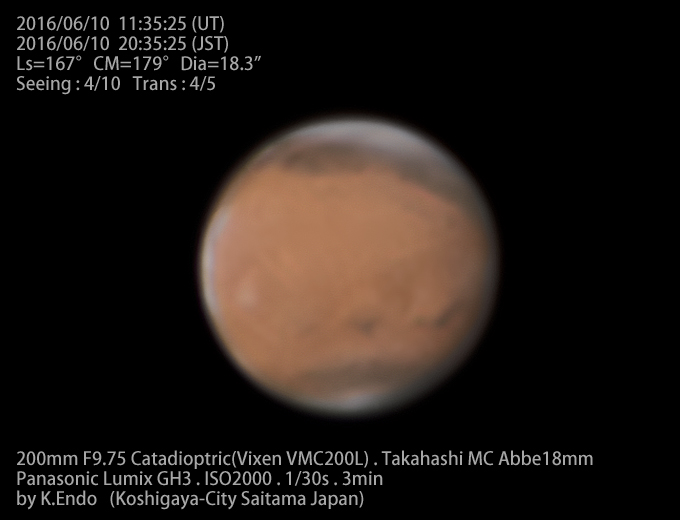 ≪埼玉県越谷市 遠藤宏次≫[Koji Endo : Saitama Japan]
≪埼玉県越谷市 遠藤宏次≫[Koji Endo : Saitama Japan]
|
Toshirou.Mishina (200mm Newtonian) |
梅雨の中休みでした。時間を空けた6ショットです。
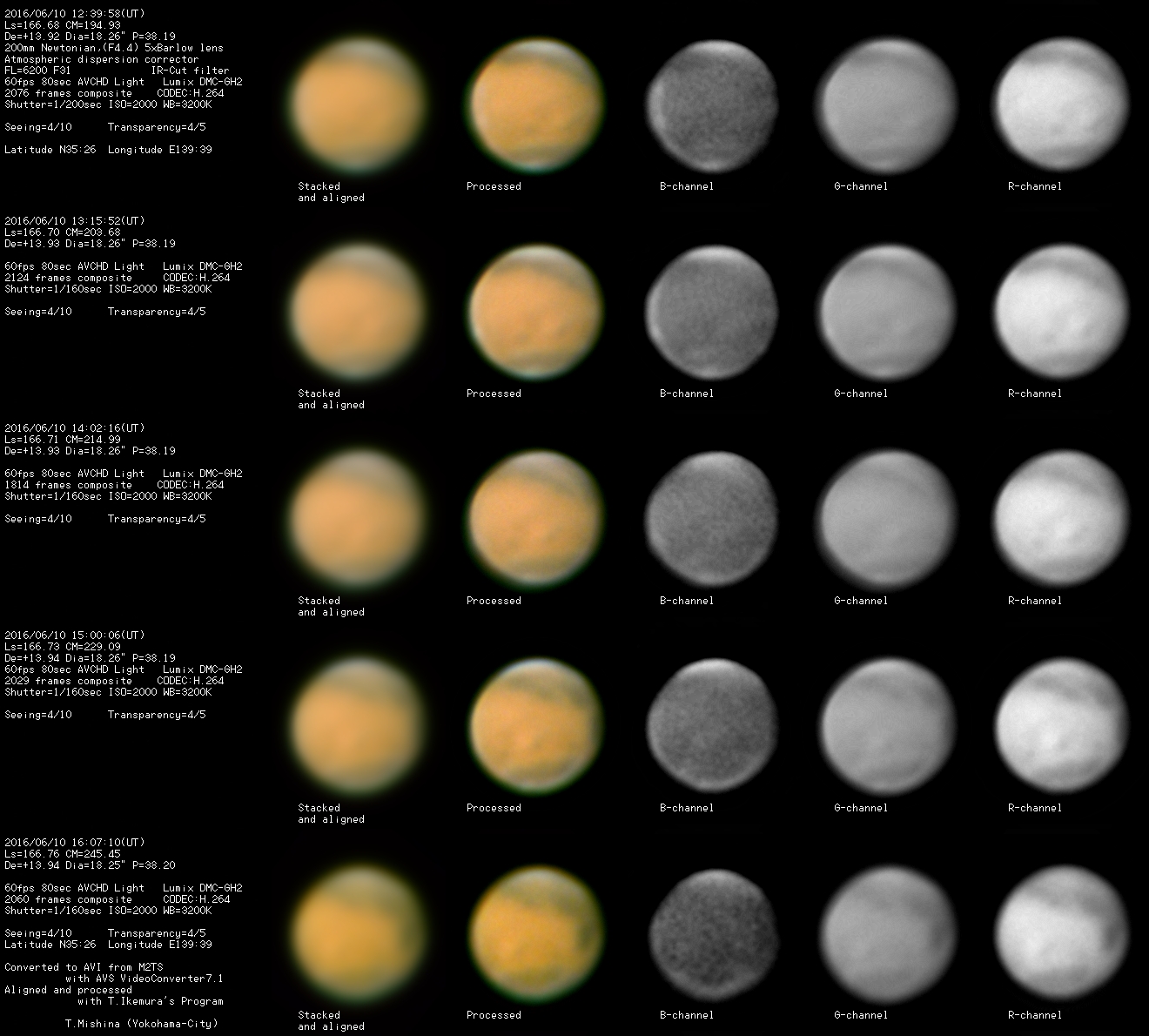 ≪神奈川県 横浜市 三品利郎≫[Toshirou.Mishina:Kanagawa Japan]
≪神奈川県 横浜市 三品利郎≫[Toshirou.Mishina:Kanagawa Japan]
|
Seiichi Yoneyama(248mm Newton) |
眼視ではシーイングが良さそうでしたが、画像的には期待外れでした。
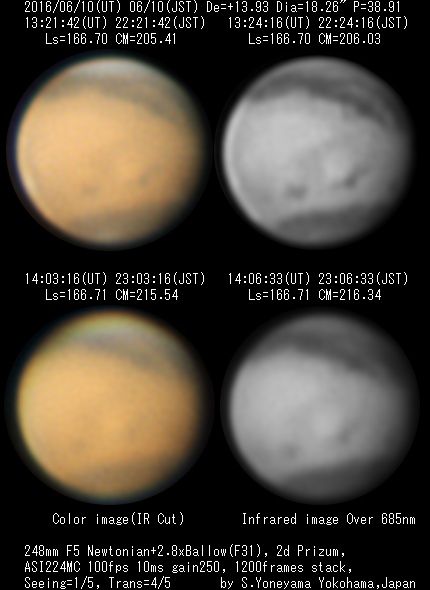 ≪神奈川県横浜市 米山誠一≫[Seiichi Yoneyama:Kanagawa Japan]
≪神奈川県横浜市 米山誠一≫[Seiichi Yoneyama:Kanagawa Japan]
|
T.Ishibashi (310mm Newtonian) |
雲もあり、今ひとつの気流でした。雲は南北だけでなく夕方もよく見えていました。
 (Tutomu-Ishibashi Kanagawa-P Japan)
≪神奈川県 相模原市 石橋力≫
(Tutomu-Ishibashi Kanagawa-P Japan)
≪神奈川県 相模原市 石橋力≫
I am afraid seeing conditions have been exceptionally poor the last two evenings,with focussing being a real challenge. I am amazed that the ASI224MC is still able to eke out at least some of the major features. Cloud activity in Hellas is continuing. I also note the two reddish lines over Syrtis Major,although any detail must be rated as a bit suspect under these conditions.
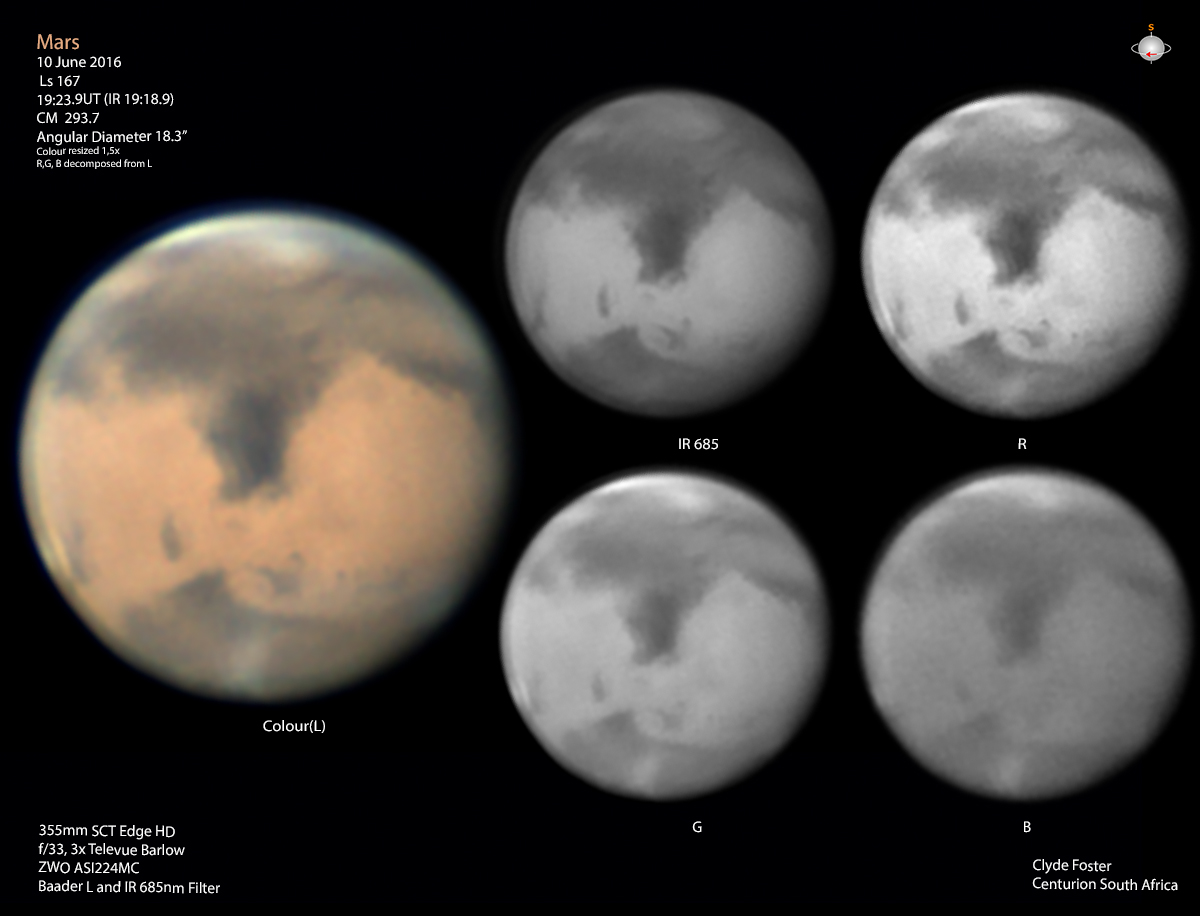
Conditions still very poor.
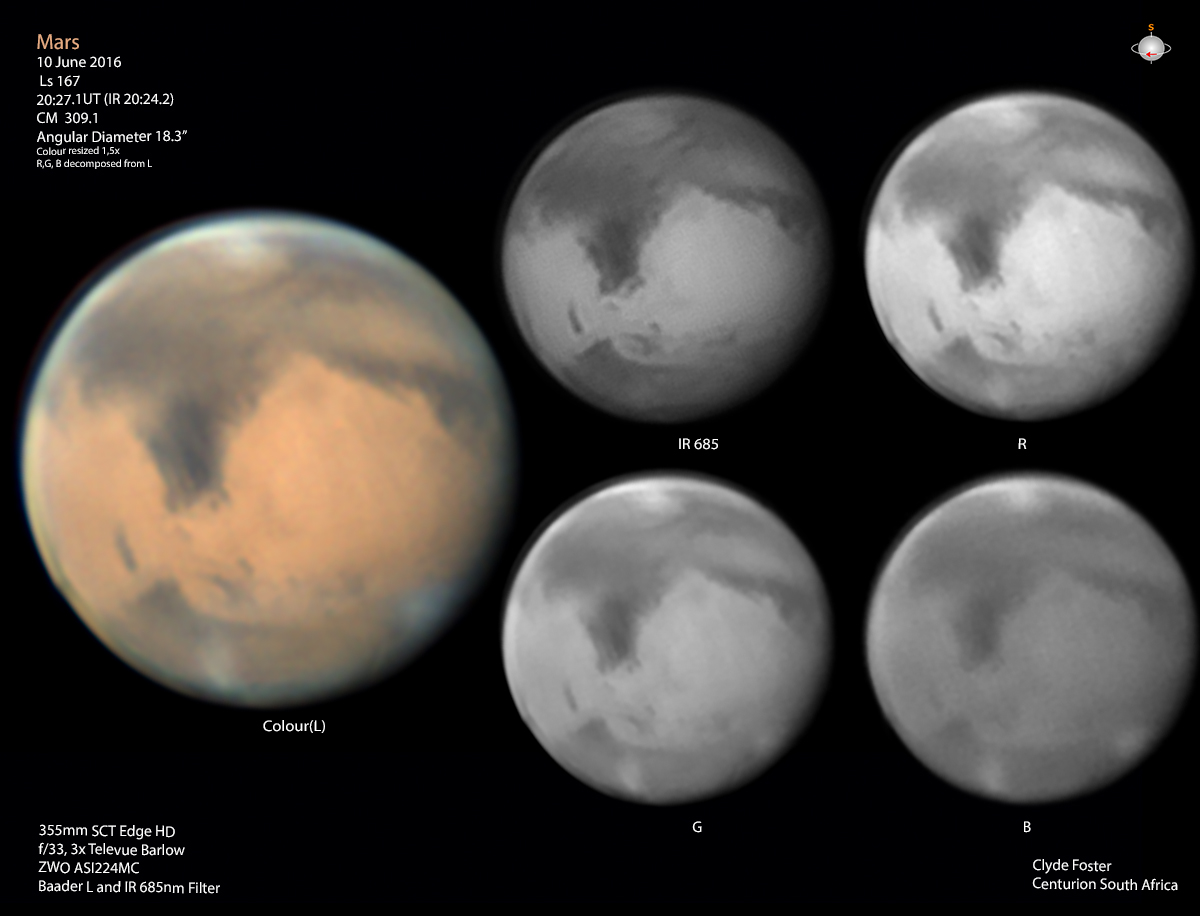
I had the opportunity on the 10 June to retest my ASI174MM,which I have had a real struggle to clean from some dust motes.
Having taken my normal ASI224MC captures(submitted previously),I took a series of R,G,B and IR captures with the ASI174MM.
My objective was to see whether there are concerns with the “L decomposition” methodology (Luminance filter with a colour camera,channel split in Photoshop) that I have been using for generating the R,G and B images on my regular image sets,as compared with monochrome RGB imaging. More specifically,I wanted to confirm whether there is value in the “L decomposed R,G,B” images,instead of just submitting a single colour(L) image.
A few notes:
1. As per my original images from the 10th June,unfortunately seeing conditions were poor/below average,so it is possibly not the best conditions for this exercise.
2. Also as previously noted,focussing was a real challenge on this evening.
3. Calculated Image scale for the ASI224MC is 0.07”/pixel whilst the ASI174MM is 0.10”/pixel.
4. There is a slight time difference between the comparison images
5. The processing of all the images was not identical,so this can impact on the comparisons somewhat.
6. My understanding of at least one of the concerns about the “decomposed RGB” methodology is that individual colour channels can be contaminated by “leakage” of the other channels.
Attached is a comparison of the decomposed RGB images from the ASI224MC with the R,G and B captures from the ASI174MM. I have also included IR captures with both cameras.
My comments on the results:
a) Red
a. The R monochrome seems to provide a slightly higher resolution than the OSC decomposition.
b. Looking at the Hellas cloud,there may be some “leakage” of B and G components,which has brightened the cloud in the OSC decomp R image.
c. I note that the NP cloud shows a R component in both images.
b) Green
a. The monochrome G image is a bit “burned out” on the Hellas cloud.
b. The monochrome G image quality is not particularly good,possibly due to the conditions and difficulty in focussing as mentioned above.
c. Resolution of the albedo features may be a bit better in the OSC decomp image. This may however be due to R “leakage”
d. Clouds may be showing a bit more strongly on the monochrome G image,although this may be due to processing.
e. Other than the above,my personal view is that the OSC decomposition gives a “reasonable” comparison with the monochrome G.
c) Blue
a. The monochrome B image quality is poor.
b. The Hellas cloud appears to show more strongly in the monochrome B image,whereas the Northern clouds are more comparable.
c. Albedo features in the OSC decomposition may be due to R “leakage”.
d. Again my personal view is that the OSC decomposed B gives a reasonable comparison with the monochrome B
d) IR
a. The monochrome IR is a bit more processed that the OSC decomposition
b. Possibly the monochrome may show a slightly better resolution,but in my opinion,it is only slightly better.
CONCLUSIONS:
* This was a single exercise,performed under non-ideal conditions,so any interpretation should be handled with caution.
* It is my personal view however,that should seeing or weather conditions impose constraints,that the “L decomposition” methodology can provide at least “reasonable” RGB decomposed images and some added-value to the image interpretation.
* With my personal objective of imaging Mars on every possible occasion,irrespective of angular size,weather and seeing conditions,with the intent of monitoring the planet as comprehensively as possible,in situations where seeing and weather imposes significant observing/imaging constraints,the use of the “L decomposition” methodology is,in my view,a reasonable compromise,and can provide at least some additional data,where RGB imaging may not be practical.
* I do not challenge the advantage of using RGB imaging as the preferred methodology,when conditions are suitable,and do not see the L decomposition methodology as competing with high quality RGB imaging. On the contrary,I remain with a personal ambition to achieve the hi-res RGB imaging standards that are being set by the best.
* I appreciate that there are likely some strong views on the above in the imaging community,and that I may get shot at/down on specific points! However,I personally wanted to undertake the exercise for my own interest,and felt that there may be benefit in sharing.
As always,any comment or feedback is welcome.
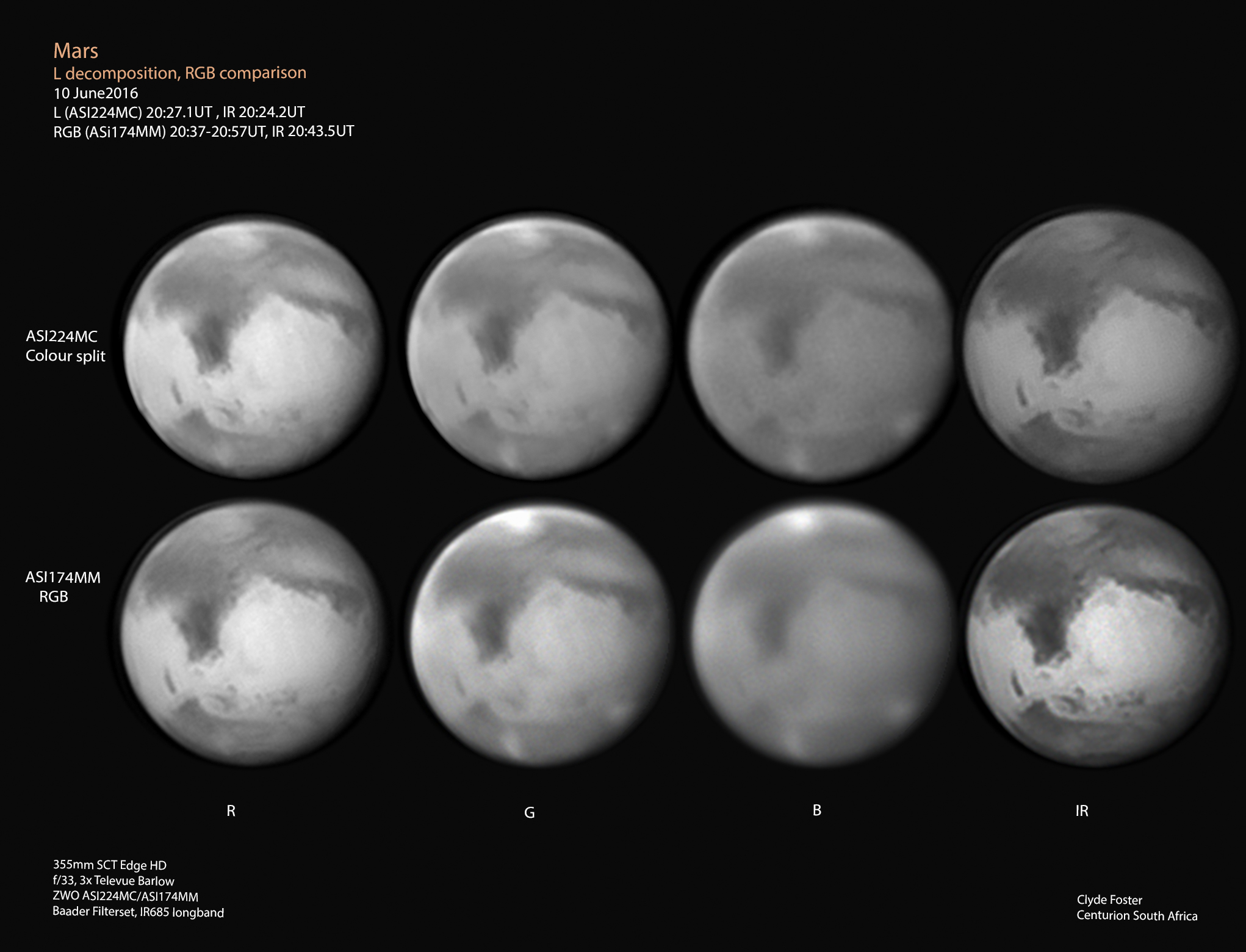
[Clyde Foster:Centurion,South Africa]
|
Keisaku Horii (305mm Newton) |
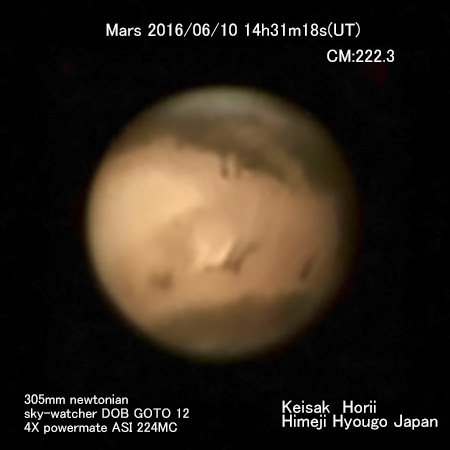 ≪兵庫県姫路市 堀井恵策≫[Keisaku Horii : Himeji Hyougo Japan]
≪兵庫県姫路市 堀井恵策≫[Keisaku Horii : Himeji Hyougo Japan]
|
Teruaki Kumamori (355mm SC) |
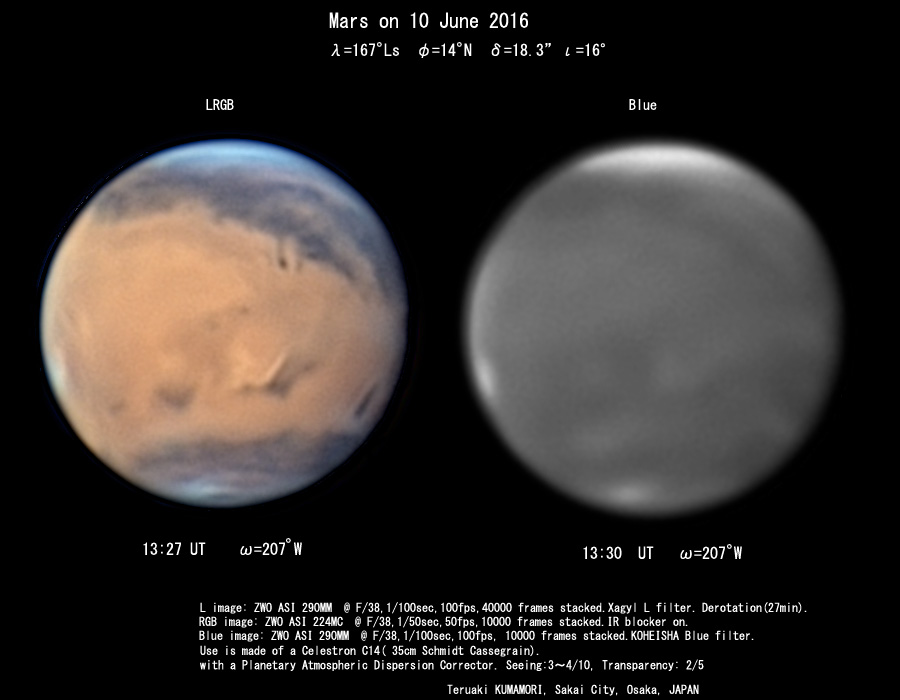 ≪大阪府堺市 熊森照明≫[Teruaki Kumamori:Ohsaka Japan]
≪大阪府堺市 熊森照明≫[Teruaki Kumamori:Ohsaka Japan]
|
Charles Galdies(203mm SC) |
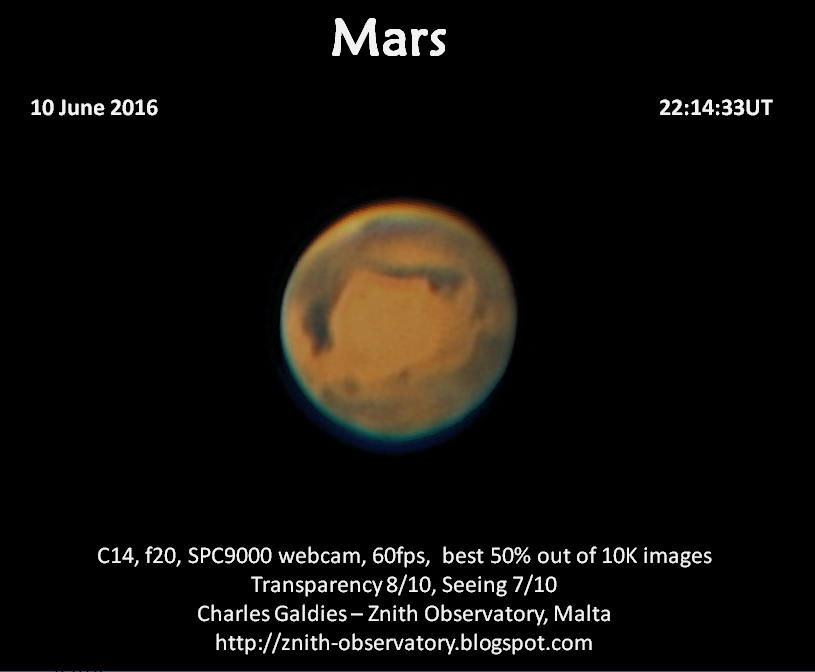 [ Charles Galdies :Naxxar-Malta]
[ Charles Galdies :Naxxar-Malta]
|
Makoto Adachi (Drawing: 310mm Newtonian) |
Elysumは明るく、火山とbright sterakが並んでいる様子が印象的だ、bright streakは
いつもと同じ位置にあり、地形的なものだと思われる。東のエッジにはひじょうに明るい雲が
で来ており、とてもよく目立つ。
 --------------------------------------------------------------
--------------------------------------------------------------
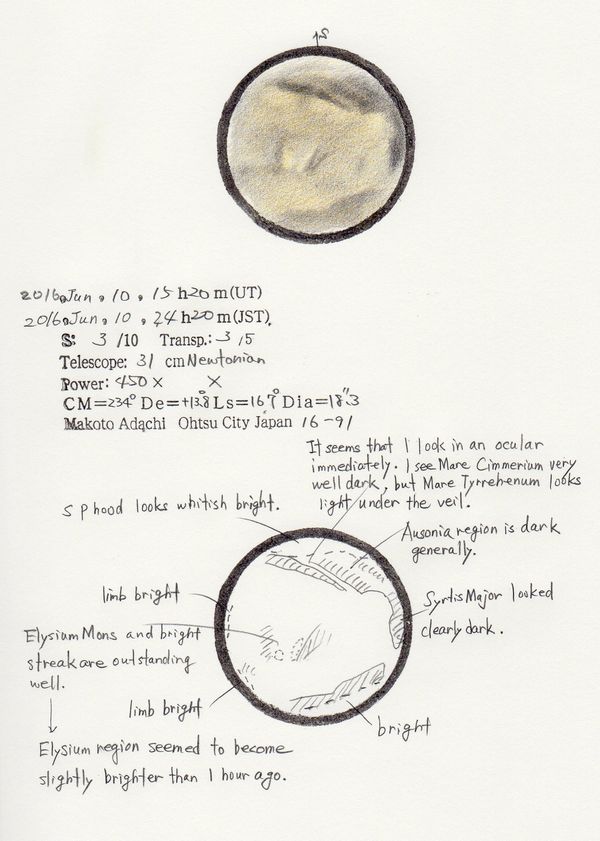 --------------------------------------------------------------
≪滋賀県 大津市 安達 誠≫[Makoto Adachi:Siga Japan]
--------------------------------------------------------------
≪滋賀県 大津市 安達 誠≫[Makoto Adachi:Siga Japan]
|
Kenkichi.Yunoki (260mm Newtonian) |
ASI290MCでのカラー撮像です。290MMでもRGBも撮りましたが、各色の露出バランスが難しいので、3色合成処理はギブアップです。MCとMMでLRGBにすれば良いかもしれません。
まだ、カメラの拡大率やゲインの試行錯誤です。De-rotationもしてみました。確かに粒状制は改善されますね。
 [Kenkichi Yunoki (Sakai City Japan)]
≪大阪府 堺市 柚木健吉≫
[Kenkichi Yunoki (Sakai City Japan)]
≪大阪府 堺市 柚木健吉≫
|
Chihiro Tanaka(250mm Newtonian) |
南の強風が吹いて鏡筒が頻繁に揺れる中での撮影です。
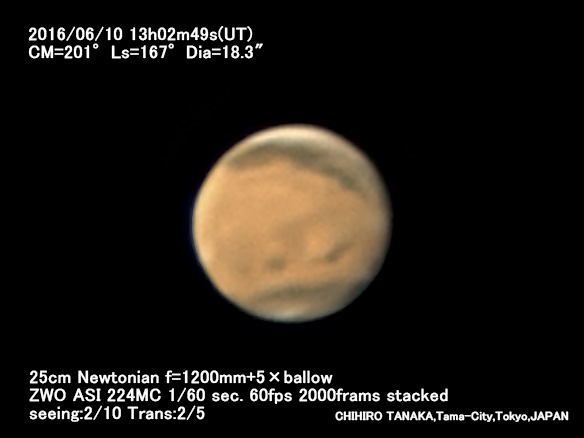 [Chihiro Tanaka (Tama-City,Tokyo,Japan)]
≪東京都多摩市 田中千尋≫
[Chihiro Tanaka (Tama-City,Tokyo,Japan)]
≪東京都多摩市 田中千尋≫
|
Robert Schulz (320mm Newtonian) |
Here is my result from 10th June 2016.
I used Winjupos to combine twelve individual videos.
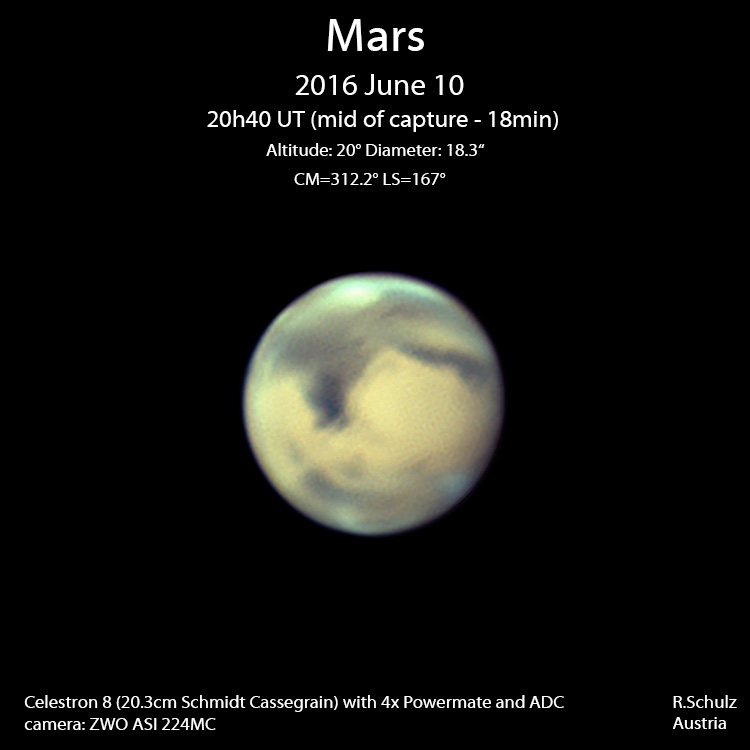 [Robert Schulz,Austria]
[Robert Schulz,Austria]
|
Efrain Morales Rivera(300mm SC) |
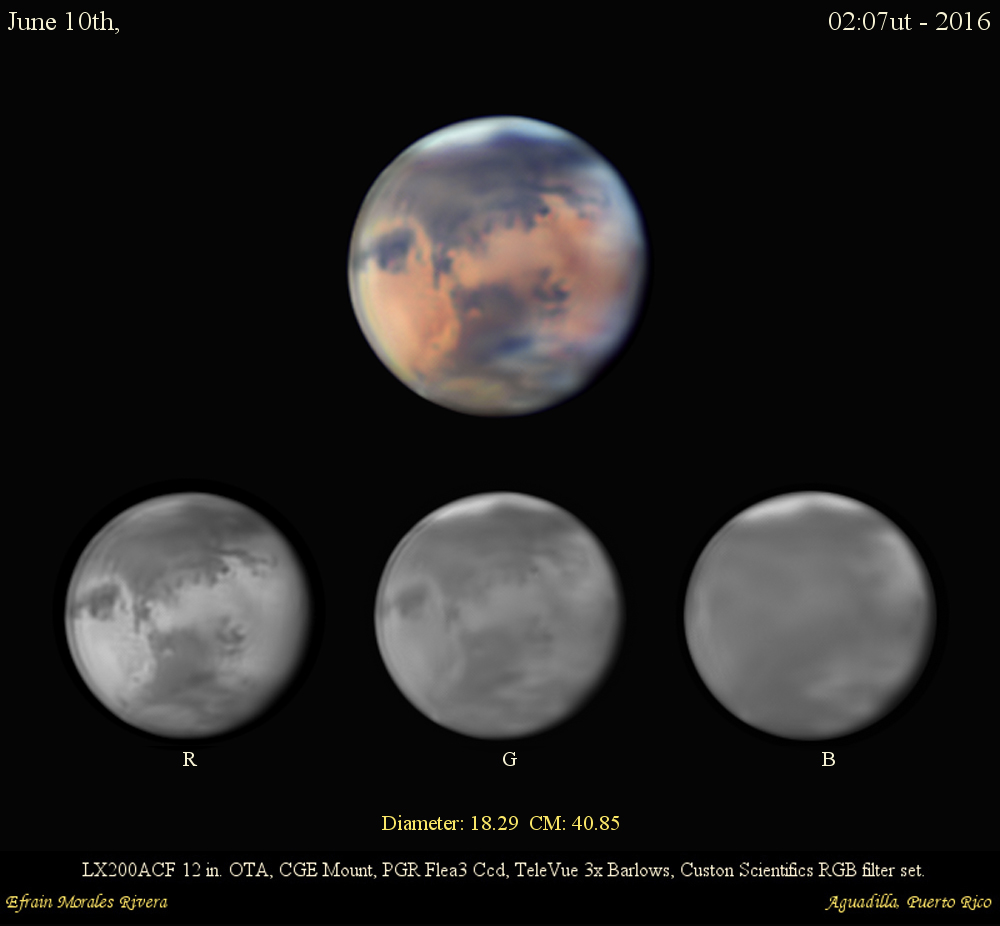 [Efrain Morales Rivera Aguadilla:Puerto Rico]
[Efrain Morales Rivera Aguadilla:Puerto Rico]
|
Silvia Kowollik (150mm Macsutov-Cassegrain) |
00:14:15 UT
Equippment was a 150/1800 Mak (Skywatcher),2-x Barlow Lens inside ADC
(ZWO) and ALCCD5L-IIc. 15000 Images captured in 300 seconds,(mid of
video is 00:14:15 UT) with Firecapture,75% used with Autostakkert2,
including 1,5x Drizzel,Image processing with Giotto 2.21.
Seeing was stable with 5-6/10,Transparency 4/10.
CM = 13,36 °W
Observing Place: Balkony in Ludwigsburg,Germany
Depending on the very deep position of Mars with only 12 ° elevation no clouds where visible.
 [Silvia Kowollik Ludwigsburg,Germany]
[Silvia Kowollik Ludwigsburg,Germany]
|
Seiichi Kanno(300mm Newtonian) |
今回も火星が激しく揺れ動き、なかなか良いシーイングに出会うことが出来ません。
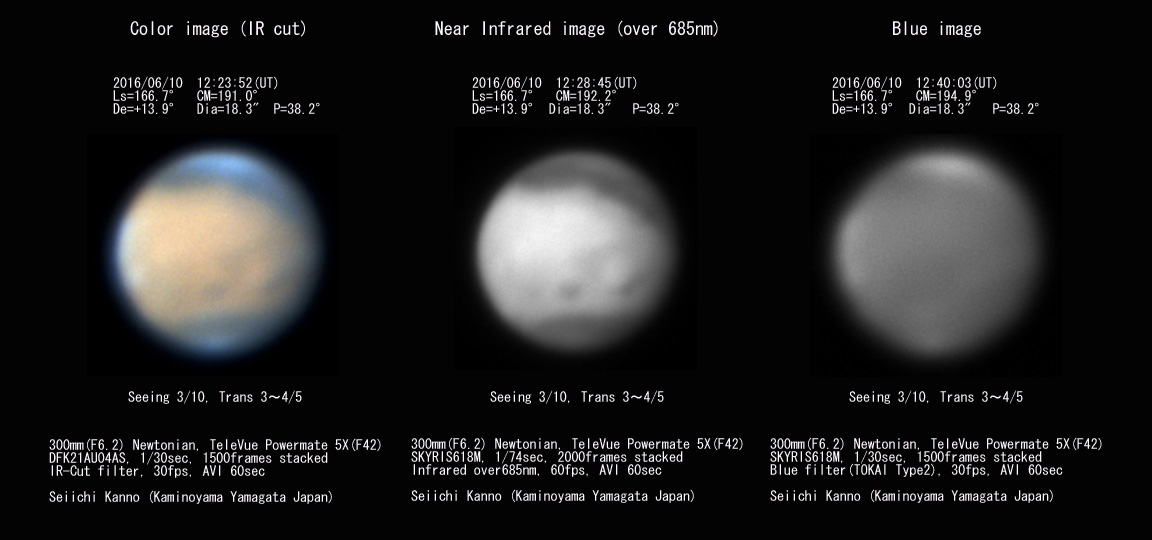 ≪山形県上山市 菅野清一≫[Seiichi Kanno:Yamagata Japan]
≪山形県上山市 菅野清一≫[Seiichi Kanno:Yamagata Japan]
|
Manos Kardasis (355mm SCT) |
here is a set under good seeing but low altitude.South polar hoods and some North polar clouds expanding south are visible. Clouds in southern Hellas.
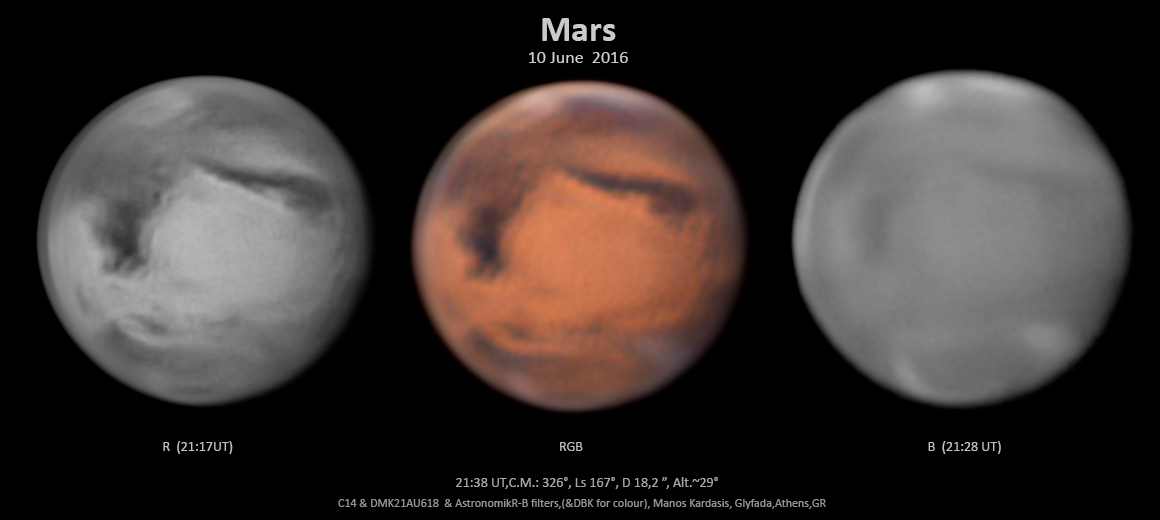 [Manos Kardasis,Glyfada-Athens;Greece]
《カーダシス マノス:ギリシャ アテネ》
[Manos Kardasis,Glyfada-Athens;Greece]
《カーダシス マノス:ギリシャ アテネ》
|
Kolovos Dimitrios ( 280mm SCT ) |
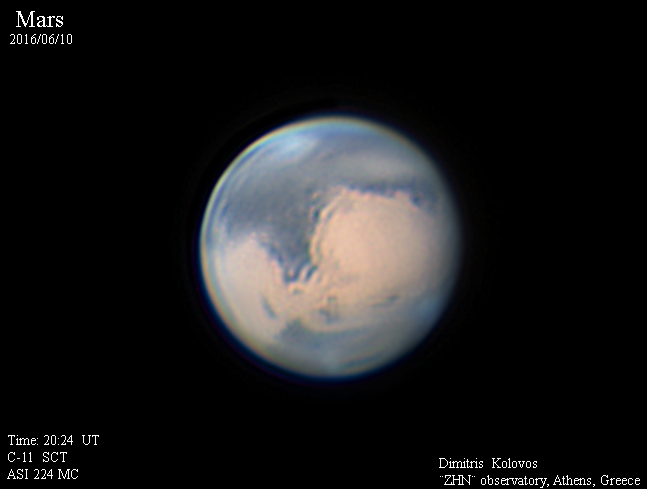
[Kolovos Dimitrios,Athens Greece]
《コロボス デミトゥリオス ギリシャ アテネ》
|
Kimikazu Ozaki(440mm Rfd) |
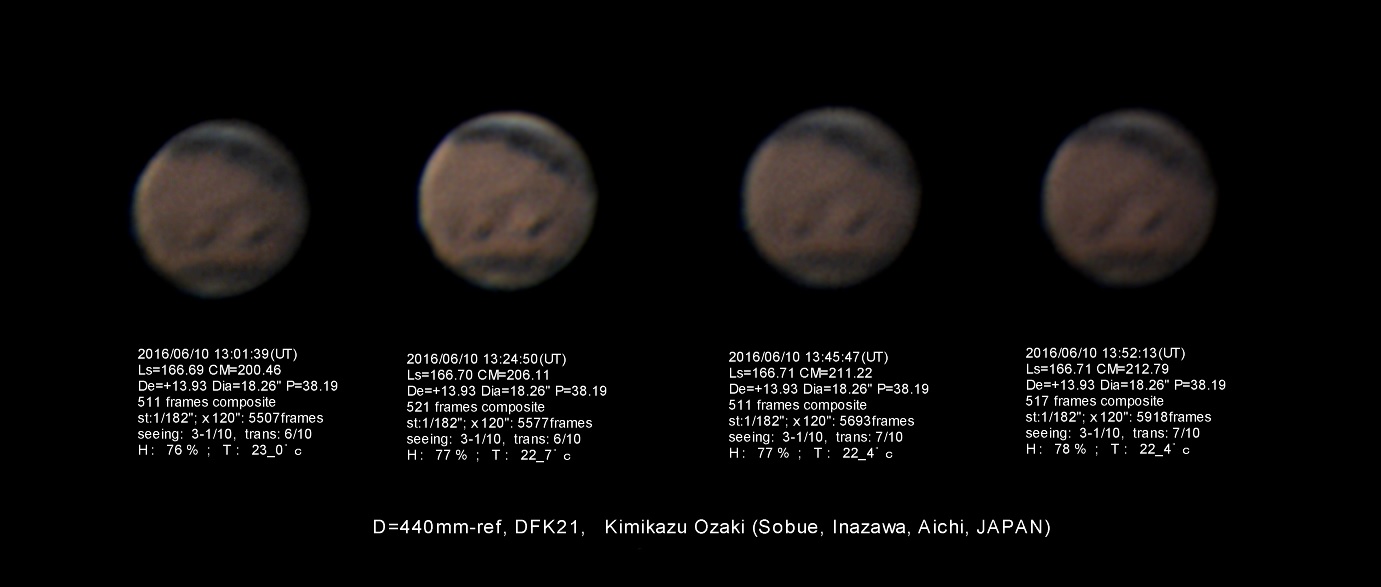 [Ki.Ozaki,Sobue Inazawa Aichi JAPAN]
≪愛知県稲沢市祖父江町 尾崎公一≫
[Ki.Ozaki,Sobue Inazawa Aichi JAPAN]
≪愛知県稲沢市祖父江町 尾崎公一≫
|
Toshihiko.Usude (355mm SC) |
 ≪ 大阪府 枚方市 薄出敏彦≫[Toshihiko-Usude: Ohsaka Japan]
≪ 大阪府 枚方市 薄出敏彦≫[Toshihiko-Usude: Ohsaka Japan]
 [ Paul Maxson:Surprise,Arizona,United States]
[ Paul Maxson:Surprise,Arizona,United States]
|
Damian Peach (356mm Celestron SCT) |
Only a brief spell of very good seeing on this session.
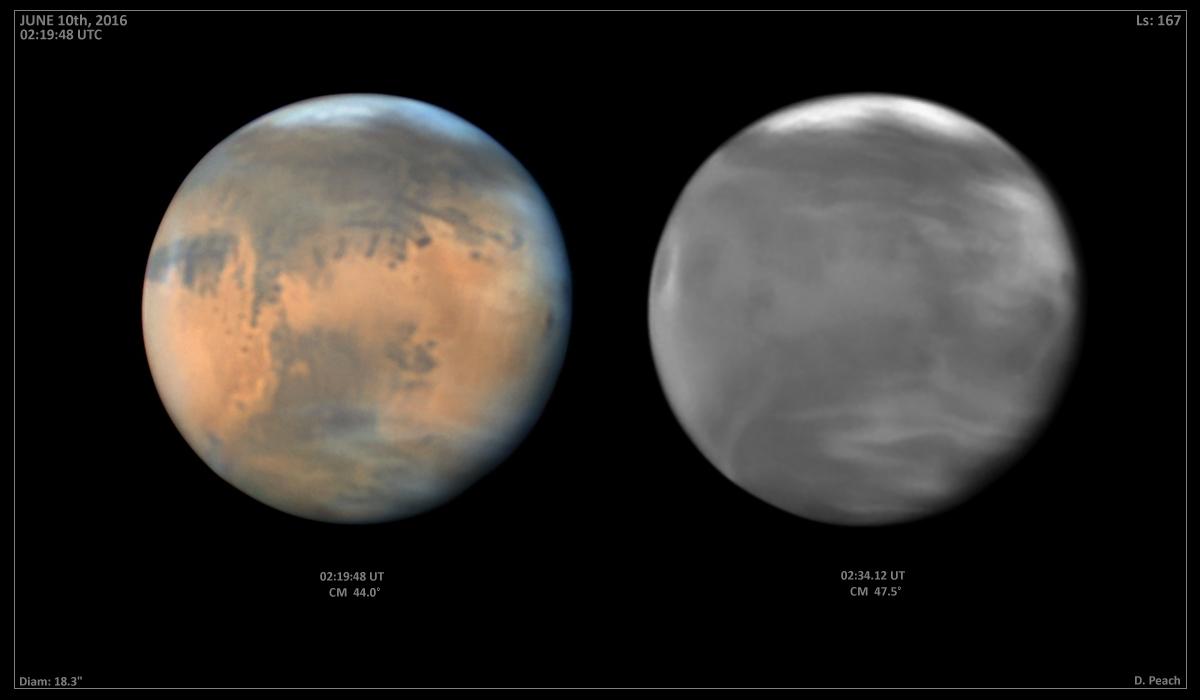 [Damian Peach: Loudwater,Buckinghamshire,United Kingdom]
[Damian Peach: Loudwater,Buckinghamshire,United Kingdom]

 ≪埼玉県越谷市 遠藤宏次≫[Koji Endo : Saitama Japan]
≪埼玉県越谷市 遠藤宏次≫[Koji Endo : Saitama Japan] ≪神奈川県 横浜市 三品利郎≫[Toshirou.Mishina:Kanagawa Japan]
≪神奈川県 横浜市 三品利郎≫[Toshirou.Mishina:Kanagawa Japan] ≪神奈川県横浜市 米山誠一≫[Seiichi Yoneyama:Kanagawa Japan]
≪神奈川県横浜市 米山誠一≫[Seiichi Yoneyama:Kanagawa Japan] (Tutomu-Ishibashi Kanagawa-P Japan)
≪神奈川県 相模原市 石橋力≫
(Tutomu-Ishibashi Kanagawa-P Japan)
≪神奈川県 相模原市 石橋力≫


 ≪兵庫県姫路市 堀井恵策≫[Keisaku Horii : Himeji Hyougo Japan]
≪兵庫県姫路市 堀井恵策≫[Keisaku Horii : Himeji Hyougo Japan] ≪大阪府堺市 熊森照明≫[Teruaki Kumamori:Ohsaka Japan]
≪大阪府堺市 熊森照明≫[Teruaki Kumamori:Ohsaka Japan] [ Charles Galdies :Naxxar-Malta]
[ Charles Galdies :Naxxar-Malta] --------------------------------------------------------------
--------------------------------------------------------------
 --------------------------------------------------------------
≪滋賀県 大津市 安達 誠≫[Makoto Adachi:Siga Japan]
--------------------------------------------------------------
≪滋賀県 大津市 安達 誠≫[Makoto Adachi:Siga Japan] [Kenkichi Yunoki (Sakai City Japan)]
≪大阪府 堺市 柚木健吉≫
[Kenkichi Yunoki (Sakai City Japan)]
≪大阪府 堺市 柚木健吉≫ [Chihiro Tanaka (Tama-City,Tokyo,Japan)]
≪東京都多摩市 田中千尋≫
[Chihiro Tanaka (Tama-City,Tokyo,Japan)]
≪東京都多摩市 田中千尋≫ [Robert Schulz,Austria]
[Robert Schulz,Austria] [Efrain Morales Rivera Aguadilla:Puerto Rico]
[Efrain Morales Rivera Aguadilla:Puerto Rico] [Silvia Kowollik Ludwigsburg,Germany]
[Silvia Kowollik Ludwigsburg,Germany] ≪山形県上山市 菅野清一≫[Seiichi Kanno:Yamagata Japan]
≪山形県上山市 菅野清一≫[Seiichi Kanno:Yamagata Japan] [Manos Kardasis,Glyfada-Athens;Greece]
《カーダシス マノス:ギリシャ アテネ》
[Manos Kardasis,Glyfada-Athens;Greece]
《カーダシス マノス:ギリシャ アテネ》
 [Ki.Ozaki,Sobue Inazawa Aichi JAPAN]
≪愛知県稲沢市祖父江町 尾崎公一≫
[Ki.Ozaki,Sobue Inazawa Aichi JAPAN]
≪愛知県稲沢市祖父江町 尾崎公一≫ ≪ 大阪府 枚方市 薄出敏彦≫[Toshihiko-Usude: Ohsaka Japan]
≪ 大阪府 枚方市 薄出敏彦≫[Toshihiko-Usude: Ohsaka Japan] [ Paul Maxson:Surprise,Arizona,United States]
[ Paul Maxson:Surprise,Arizona,United States] [Damian Peach: Loudwater,Buckinghamshire,United Kingdom]
[Damian Peach: Loudwater,Buckinghamshire,United Kingdom] ALPO-Japan Latest
ALPO-Japan Latest